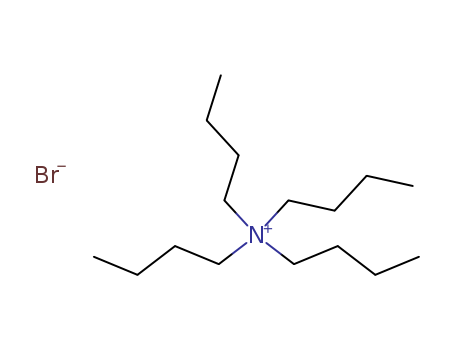10.1016/j.tetlet.2011.01.003
The study develops an efficient and environmentally friendly method for the N-arylation of amides using aryl halides, catalyzed by ligand-free copper(I) oxide (Cu2O) in water. This method provides a practical approach to synthesizing N-arylated amides, which are valuable in pharmaceuticals and materials science. The research focuses on optimizing reaction conditions, including the choice of copper catalyst, base, and phase-transfer catalyst, to achieve good to excellent yields of the desired N-arylated products. The method proves effective for a variety of amides and aryl iodides, making it a versatile tool for organic synthesis.
10.1021/ja304716r
The research focuses on the development of a method for catalytic formation of electroauxiliaries and their subsequent anodic oxidation, interfacing N-heterocyclic carbene (NHC)-based organocatalysis with electroorganic synthesis. The purpose of this study was to achieve the direct oxidation of catalytically-generated electroactive intermediates, specifically converting aldehydes to esters for a broad range of aldehyde and alcohol substrates. The researchers demonstrated that this method produced very clean anodic oxidation reactions, with only H2 gas being formed as a result of cathodic reduction. The key chemicals used in the process included aldehydes, alcohols, NHC catalysts, DBU (a base), and various electrolytes such as Bu4NClO4 and Bu4NBr (TBAB). The study concluded that this organocatalyzed anodic oxidation approach provided a direct conversion of aldehydes to esters without the need for stoichiometric exogenous oxidants, high potentials, or redox mediators, and it was successful for a variety of aldehyde and alcohol coupling partners, even using simplified electrochemical equipment like alkaline batteries and graphite sticks.
10.1021/jo00007a035
The research investigates the conformational behavior of multiarmed organic compounds, specifically focusing on decakis(bromomethyl)biphenyl (3) and an attempted synthesis of decakis(bromomethyl)benzophenone (4). The purpose is to understand how mutual steric interactions between different multiarmed moieties influence the preferred conformation of these molecules, which can have implications for their potential applications in liquid crystal properties, organometallic compound synthesis, and complexing capabilities. Tetrabutylammonium Bromide (TBAB) is used as a phase-transfer catalyst in the bromination reactions. Pyridinium Dichromate (PDC) is employed as an oxidizing agent to convert decamethylbenzhydrol (7) to decamethylbenzophenone (6). The study found that the preferred conformation of 3 is not the alternate "up-down" arrangement observed in simpler systems but a disrupted form due to steric interactions between the bromomethyl groups, aiming to avoid bromine-bromine contacts. Molecular mechanics calculations supported this finding, indicating that conformations with some syn interactions are favored. The rotational barrier for the CH2Br groups was estimated to be 12.5 kcal/mol from dynamic NMR data. The research concludes that the spatial proximity of multiarmed moieties can lead to conformational shifts, highlighting the importance of steric interactions in determining molecular structure.
10.1016/S0040-4020(01)00528-2
The study presented in the file involves the synthesis of various compounds through a combination of chemical reactions, such as coupling and cyclization processes, using palladium-catalyzed cross-coupling reactions. Key elements of the study include investigating reaction conditions, optimizing yield, and assessing product purity. The main reactions explored are the coupling of aryl halides with olefins, with different catalysts and solvents. Various aryl halides, olefins, and coupling agents were evaluated to determine their effectiveness in producing specific products, focusing on the yield, reaction time, and stereoselectivity of the final products. The study aims to develop efficient synthetic pathways for producing complex organic molecules.
10.1080/10426500802274625
The study presents an efficient, green, and reusable catalytic system using KF/Al2O3 for the solvent-free synthesis of N-alkyl derivatives of sulfonamides via Michael reactions. The process is conducted under microwave irradiation without the need for organic solvents, making it environmentally friendly and cost-effective. The researchers optimized the reaction conditions and found that the use of KF/Al2O3 and tetrabutylammonium bromide (TBAB) significantly improved the yield and selectivity of the desired N-alkylated sulfonamides. The method was effective with various α,β-unsaturated esters and sulfonamides, demonstrating broad applicability. The catalyst could be reused multiple times after simple washing, showing its potential for industrial applications. The study emphasizes the importance of green chemistry practices and the role of microwave irradiation in accelerating reaction rates and improving outcomes.
10.1055/s-0032-1316908
The research presents a study on the synthesis of α-iminonitriles, also known as imidoyl cyanides, which are valuable precursors for a variety of functional groups and nitrogen-containing heterocycles. The researchers developed an oxidative three-component Strecker reaction using a biphasic solvent system (toluene/H2O) with Oxone as the oxidizing agent, tetra-n-butylammonium bromide (TBAB) as a phase-transfer catalyst, and sodium bicarbonate as a buffer. The reaction involves aldehydes, amines, and trimethylsilyl cyanide (TMSCN) and was found to be applicable to a broad range of substrates, including aromatic and aliphatic aldehydes and amines with different electronic and steric properties. The study optimized the reaction conditions, which included the concentration of reactants, the stoichiometry of Oxone and TBAB, and the use of sodium bicarbonate to buffer the reaction mixture. The experiments yielded α-iminonitriles in good to excellent yields and demonstrated high chemoselectivity. The synthesized compounds were characterized using various analytical techniques, including NMR, IR, HRMS, and melting point determination, with the reaction conditions and yields detailed in Tables 1 and 2 of the paper.
10.1246/cl.1999.1053
The research focuses on the efficient electrochemical N-glycosylation of silylated pyrimidines with protected arylthioriboses, using catalytic amounts of NBS (N-bromosuccinimide) or Br2 (bromine) as mediators. The purpose of this study was to discover a convenient method for the synthesis of nucleosides, which are important from both economic and environmental perspectives. The researchers found that the electrochemical N-glycosylation proceeded preferentially in the presence of a catalytic amount of NBS or bromine, yielding nucleosides with good selectivity and yield. Key chemicals used in the process included arylthioriboses as stable glycosyl donors, silylated pyrimidines as soluble glycosyl acceptors, and tetrabutylammonium bromide (BuNBr) as a supporting electrolyte.



 Xi,
Xi, Xn
Xn


